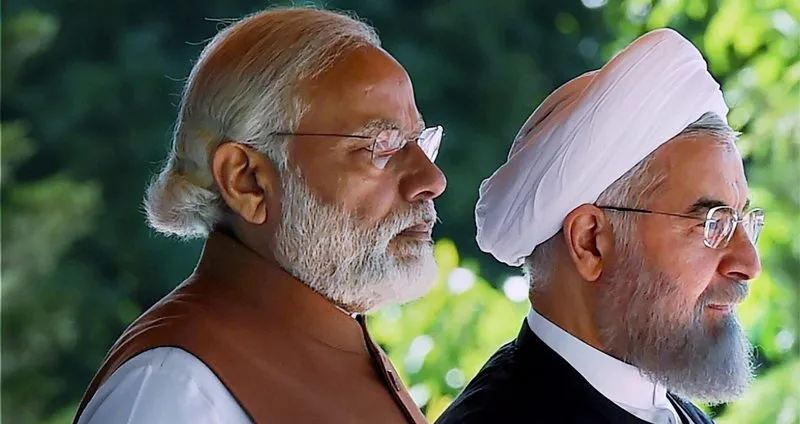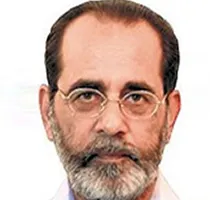-
CENTRES
Progammes & Centres
Location

Prime Minister Narendra Modi’s visit to Iran earlier this week is among the more important diplomatic initiatives, but needs follow through to establish a partnership with significant implications, both bilateral and regional. Coming after his visits to Saudi Arabia and the United Arab Emirates, and with trips planned to Qatar in June and Israel later this year, it is clear that India has embarked on an active diplomatic drive in West Asia.
The foundations of a new relationship with Iran were laid in 2001 during Prime Minister Atal Bihari Vajpayee’s visit, followed by Iranian President Mohammad Khatami’s presence as the Republic Day chief guest in 2003. The New Delhi Declaration provided the strategic underpinning in terms of shared regional and global interests and addressed all aspects of bilateral cooperation — energy, connectivity, education and training, and science and technology with special reference to information technology. Both countries also established a framework for enhancing defence cooperation.
Barely < class="aBn" tabindex="0" data-term="goog_1091307813">< class="aQJ">two months later, the US declared war on Iraq with far-reaching consequences for the region that are still unfolding. Meanwhile, the window of opportunity that had opened when Iran cooperated with the US in the ouster of the Taliban in 2001-2002 closed abruptly when US President George Bush included Iran in his ‘axis of evil’ speech, with Iranian President Mahmoud Ahmadinejad later responding with his characteristic hard-line rhetoric. India and Iran tried to keep relations on track with Mr. Ahmadinejad’s visit in 2008 and Prime Minister Manmohan Singh going to Tehran for a non-aligned movement summit in 2012, but it was clear that the growing isolation of Iran under Western sanctions and India’s negative vote in the International Atomic Energy Agency in 2005 had put the New Delhi Declaration in hibernation, waiting for better days.
These real political constraints limited the US-Iran diplomatic dance to modest steps, reflected in the increasingly complex sanctions landscape. Prior to < class="aBn" tabindex="0" data-term="goog_1091307814">< class="aQJ">January 16 this year, the Western sanctions regime was largely harmonised, but there are now growing gaps. The US has lifted “secondary nuclear-related sanctions”, but its unilateral sanctions linked to terrorism and missile proliferation remain; so does its general trade embargo with exceptions for export of Iranian carpets and pistachios and US exports of medicines, communication equipment, and commercial passenger aircraft and related parts and services. Other countries can resume normal trade with Iran, but financial transactions have to bypass US territory even if the transactions are denominated in US dollars. Further, the US still retains about 200 Iranian entities on a prohibited list and transactions with these will attract American sanctions.
This complexity may be a bonanza for lawyers, but has slowed down the process of sanctions relief as also the release of Iran’s blocked financial assets. Since petroleum trade is largely dollar-denominated, Western banking channels are still unsure about how to structure these transactions so as to bypass US shores and entities. The idea of a sanctions redux were Iran to violate the JCPOA may sound politically remote but has made banks, insurance companies and commercial entities cautious, especially when it comes to exports of manufactured goods with US content. On the one hand, US companies are concerned that others may be gaining market share but on the other, untying the US legal knots is necessary for effective sanctions relief under the JCPOA and diluting the toxicity that has characterised US-Iran relations.
A key development was signing of the Trilateral Transit and Transport Corridor Treaty for which Afghan President Ashraf Ghani was also present in Tehran. The project involves developing Chabahar port (barely a thousand kilometres from Kandla, Gujarat) with road and rail connectivity linking it to Zaranj, on the Afghan-Iran border, 900 km to the north. The initial trilateral agreement to develop the Chabahar route to facilitate regional trade and transit to Afghanistan and Central Asia had been signed more than a decade ago. In 2008, India completed the 215-km-long Zaranj-Delaram road in Afghanistan at a cost of ₹600 crore, but developments on the Iran side had stalled. This time, the trilateral agreement is accompanied by a clutch of memorandums of understanding between Exim Bank, IRCON, Export Credit Guarantee Corporation and India Ports Global Pvt. Ltd. with their respective Iranian counterparts to ensure that the long committed $150 million for Chabahar will be released, ₹3,000 crore will be made available for the steel rails to start the $1.6 billion rail connectivity project and $85 million is committed for equipping the terminals and berths at Chabahar under long-term lease to India.
Iran too is looking east for partners. Traditionally, India, China and Japan have been major buyers of Iranian crude. Chinese President Xi Jinping was in Tehran in January just after sanctions were eased and Japanese Prime Minister Shinzo Abe is expected later in 2016. Before sanctions kicked in, China-Iran trade was of the order of $50 billion; the target for 2026 is $600 billion. China has assured Iran of a welcome in the Shanghai Cooperation Organisation and a 25-year framework for a strategic partnership. About six weeks after Mr. Xi’s visit, a 32-container train completed a journey from Yiwu to Tehran in a fortnight, a journey of 6,500 miles traversing Kazakhstan and Turkmenistan, shrinking the maritime travel period from Shanghai to Bandar Abbas by a month and demonstrating the attraction of the Chinese ‘One Belt One Road’ initiative. The challenge for the Modi government therefore will be to ensure timely implementation of the Chabahar project. Japanese interest in working together on Chabahar is a welcome sign and needs to be explored further.
Other MoUs signed relate to science and technology cooperation, cultural exchanges, projects involving National Archives and policy dialogue involving think tanks and foreign ministries. Project agreements regarding a urea factory in the Chabahar Free Trade Zone, terms for the Farzad B gas field and an alumina plant have yet to be concluded. The joint working group on defence cooperation needs to be activated. A bilateral investment treaty and a double taxation avoidance treaty are other initiatives to be pursued in future. There is a substantive follow-up agenda but first, the Modi government has to deliver on project implementation because Iran today is a country in a hurry, with no dearth of suitors from east or west.
This commentary originally appeared in The Hindu.
The views expressed above belong to the author(s). ORF research and analyses now available on Telegram! Click here to access our curated content — blogs, longforms and interviews.

Ambassador Rakesh Sood was a Distinguished Fellow at ORF. He has over 38 years of experience in the field of foreign affairs economic diplomacy and ...
Read More +